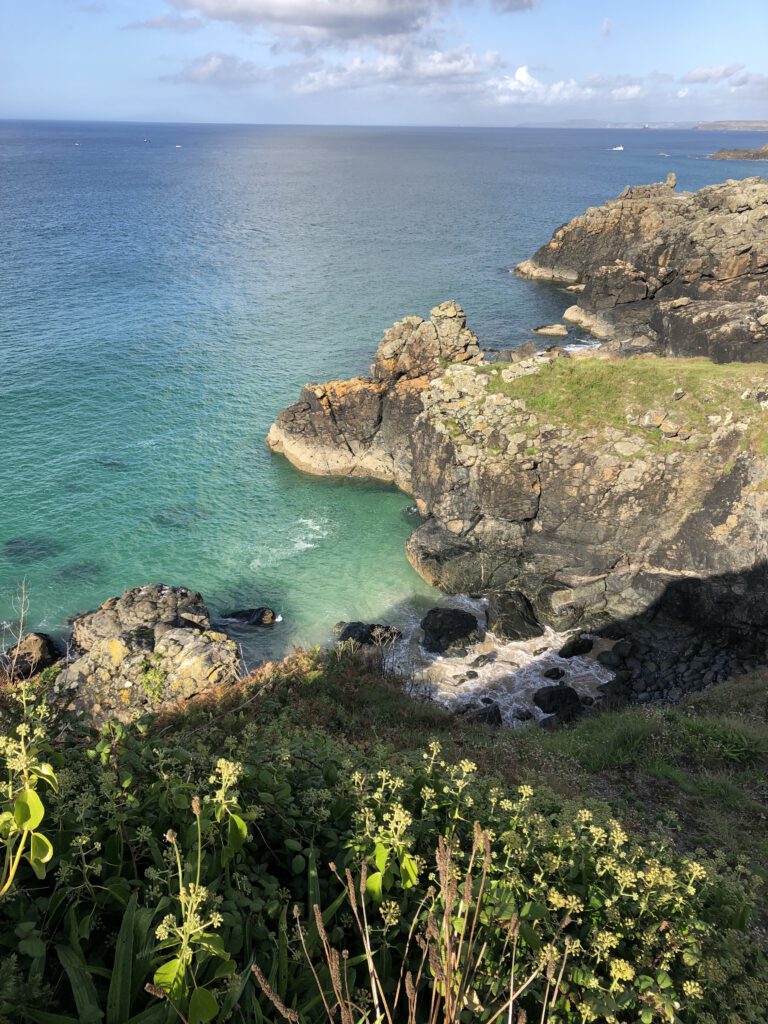
Barbara Hepworth: Die Pionierin der modernen Skulptur
Barbara Hepworth (1903–1975) ist eine der bedeutendsten Bildhauerinnen des 20. Jahrhunderts und eine Schlüsselfigur der modernen Kunst. Ihre Skulpturen, geprägt durch klare Linien, harmonische Formen und das Spiel von Licht und Schatten, spiegeln sowohl ihre tiefe Verbindung zur Natur als auch ihren künstlerischen Mut wider.
Künstlerischer Weg
Sie studierte ab 1920 an der Leeds School of Art. Nach ihrem Studium in Leeds setzte Hepworth ihre Ausbildung am Royal College of Art in London fort und reiste dann nach Italien, wo sie sich in Florenz weiterbildete. In dieser Zeit entdeckte sie das direkte Arbeiten am Stein, was fortan zu einem zentralen Bestandteil ihrer Arbeit wurde.
Die Entwicklung eines eigenen Stils
Hepworths Stil war von Anfang an durch die Suche nach organischen Formen und eine harmonische Verbindung von Raum und Materie geprägt. Ihre Arbeiten waren zunächst eher abstrakt, doch immer durchdrungen von einer natürlichen Ästhetik, die an Landschaften, Pflanzen oder Meeresformen erinnerte.
Ihre Skulpturen aus dieser Zeit zeichnen sich durch weiche, fließende Linien aus, die oft von Öffnungen und Durchbrüchen durchzogen sind. Diese Öffnungen, die Hepworth besonders in ihren späteren Arbeiten einsetzte, symbolisieren die Verbindung zwischen Innen und Außen, eine Vereinigung von Form und Raum.
Die Bedeutung von Natur und Landschaft
Hepworths künstlerische Entwicklung fand oft in enger Verbindung mit ihrer Umgebung statt. 1939 zog sie mit ihrem zweiten Ehemann, dem Künstler Ben Nicholson, nach St. Ives in Cornwall. Die wilde Küstenlandschaft Cornwalls beeinflusste Hepworths Werk tiefgehend und inspirierte sie, die Natur direkt in ihre Arbeit einfließen zu lassen. Die raue Schönheit der Klippen und Strände Cornwalls spiegelt sich in den Formen und Materialien ihrer Skulpturen wider, die oft in organischen Linien und natürlichen Texturen gestaltet sind.
Barbara Hepworths Arbeiten sind heute in Museen und Sammlungen auf der ganzen Welt zu finden, unter anderem in der Tate Gallery in London und im Barbara Hepworth Museum in St. Ives, das nach ihrem Tod im Jahr 1975 gegründet wurde.
Ihre Kunst war geprägt von einer tiefen Humanität und einem Respekt vor der Natur. Sie sah ihre Skulpturen als eine Verbindung zwischen Mensch und Natur, zwischen Raum und Materie – eine Sichtweise, die gerade in unserer heutigen Zeit von Umweltbewusstsein und Naturverbundenheit aktuell bleibt.
Barbara Hepworth ist nicht nur eine Pionierin der modernen Bildhauerei, sondern auch ein Beispiel für den Mut und die Entschlossenheit, mit der Frauen sich ihren Platz in der Kunst erkämpfen.
Bei meiner Reise nach St Ives, Cornwall entdeckte ich dieses kleine Haus mit Atelier und Garten, in dem Barbara Hepworth bis zu ihrem Tod lebte. Das Foto zu diesem Beitrag stammt von diesem bezaubernden Ort. Eine Übersicht ihrer Werke ist auf der Homepage von Barbara Hepworth zu finden:
Barbara Hepworth: the pioneer of modern sculpture
Barbara Hepworth (1903-1975) is one of the most important sculptors of the 20th century and a key figure in modern art. Her sculptures, characterised by clear lines, harmonious forms and the interplay of light and shadow, reflect both her deep connection to nature and her artistic courage.
Artistic path
She studied at the Leeds School of Art from 1920. After her studies in Leeds, Hepworth continued her training at the Royal College of Art in London and then travelled to Italy, where she continued her training in Florence. It was during this time that she discovered working directly on stone, which from then on became a central component of her work.
The development of his own style
From the very beginning, Hepworth’s style was characterised by the search for organic forms and a harmonious combination of space and matter. Her works were initially rather abstract, but always imbued with a natural aesthetic reminiscent of landscapes, plants or sea forms.
Her sculptures from this period are characterised by soft, flowing lines that are often interspersed with openings and breakthroughs. These openings, which Hepworth used particularly in her later works, symbolise the connection between inside and outside, a union of form and space.
The importance of nature and landscape
Hepworth’s artistic development often took place in close connection with her surroundings. In 1939, she moved to St Ives in Cornwall with her second husband, the artist Ben Nicholson. The wild coastal landscape of Cornwall had a profound influence on Hepworth’s work and inspired her to incorporate nature directly into her work. The rugged beauty of Cornwall’s cliffs and beaches is reflected in the forms and materials of her sculptures, which are often designed in organic lines and natural textures.
Barbara Hepworth’s works can now be found in museums and collections all over the world, including the Tate Gallery in London and the Barbara Hepworth Museum in St Ives, which was founded after her death in 1975.
Her art was characterised by a deep humanity and respect for nature. She saw her sculptures as a connection between man and nature, between space and matter – a view that remains particularly relevant in today’s world of environmental awareness and closeness to nature.
Barbara Hepworth is not only a pioneer of modern sculpture, but also an example of the courage and determination with which women fight for their place in art.
On my trip to St Ives, Cornwall, I discovered this small house with studio and garden where Barbara Hepworth lived until her death. The photo for this article was taken in this enchanting place. An overview of her works can be found on Barbara Hepworth’s homepage: